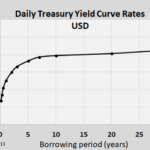Urban planning expert Charles Marohn explains why stroads are failing and offers solutions for better street design
- Stroads, a mix of neighborhood streets and roads, are failing at both their intended purposes
- Stroads repel pedestrians and bicyclists and fail to move traffic quickly
- Traffic engineers are to blame for ignoring the negative impact of stroads on adjacent neighborhoods and commercial districts
- Streets should be designed to focus on building a place, while roads should prioritize moving traffic quickly
- Ideally, we should have streets with slower speeds and roads with faster speeds
- Narrowing streets and adding trees can help slow down traffic and increase safety
- Removing traffic lights and changing intersection geometry can also promote safety
- Engineers should not have sole authority in designing streets; the public and elected officials should have a say
- There is enthusiasm for the idea of better street design, but implementation is often challenging
- Examples of successful traffic planning include the redesign of main streets in Lancaster, Calif.
- Distant suburbs without sidewalks, bike lanes, and local downtowns may not be sustainable in the long run
Urban planning critic Charles Marohn has identified a problem with a type of road he calls ‘stroads’—a mix of neighborhood streets and roads that are failing at both their intended purposes. Stroads repel pedestrians and bicyclists, while also failing to move traffic quickly. Marohn blames traffic engineers for ignoring the negative impact of stroads on adjacent neighborhoods and commercial districts. He suggests that streets should be designed to focus on building a place, while roads should prioritize moving traffic quickly. Ideally, we should have streets with slower speeds and roads with faster speeds. To achieve this, Marohn recommends narrowing streets, adding trees, and removing traffic lights. He also believes that engineers should not have sole authority in designing streets; the public and elected officials should have a say. While there is enthusiasm for the idea of better street design, implementation can be challenging. However, there have been successful examples of traffic planning, such as the redesign of main streets in Lancaster, Calif. In the long run, distant suburbs without sidewalks, bike lanes, and local downtowns may not be sustainable financially.
Factuality Level: 8
Factuality Justification: The article provides information about the concept of ‘stroads’ and the impact of road design on communities. It includes quotes from an expert in the field and examples of successful traffic planning work. The information presented is factual and based on the expert’s perspective.
Noise Level: 8
Noise Justification: The article provides a thoughtful analysis of how streets and roads are designed, the impact of different designs on communities, and the need for a shift in urban development. It explores the consequences of current road designs and offers solutions for creating more livable and resilient urban environments. The article is focused, supported by examples, and provides actionable insights for improving street design. However, it could benefit from more data and evidence to strengthen its arguments.
Financial Relevance: No
Financial Markets Impacted: No
Presence Of Extreme Event: No
Nature Of Extreme Event: No
Impact Rating Of The Extreme Event: No
Rating Justification:
Private Companies: Strong Towns
Key People: Charles Marohn (Founder of Strong Towns, Civil Engineer, Writer, Speaker)
 www.wsj.com
www.wsj.com 





